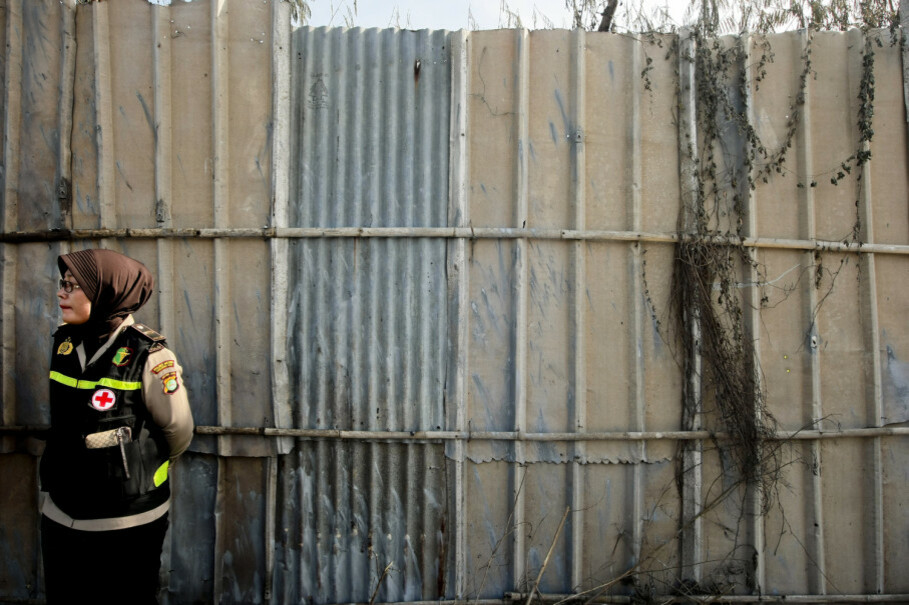
A police officer stands in front of the factory
On Thursday, October 26, 2017, in Tangerang, a city near Jakarta, local, national, regional, and global economic development tossed another 49 charred bodies, almost all women and girls, onto the sacrificial pyre. A fireworks factory “experienced” a fire. Two explosions roared, and 49 workers burned to death. The factory employed 103 workers, almost all women and girls. The death toll continues to rise. The 49 dead, and the 54 survivors, most of whom are severely injured, join their sisters from the Triangle Shirtwaist Factory in the United States, to the Kader Toy Factory in Thailand, to the Zhili Handicraft Factory in China, to the Tazreen Fashions Factory in Bangladesh, and to the Kentex Manufacturing Corporation in the Philippines two years ago and the House Technologies Industries earlier this year, also in the Philippines. Every one of these was a planned massacre of women workers. Last week’s fire in Indonesia was a planned massacre of women workers. Everyone knew it would happen, sooner or later.
Why did so many women die? So many women died because women were the workers. It makes “economic sense”, which means the pay is low and the working conditions abysmal. Now that the smoke and stench rise from the pile of 49 charred workers, almost all women and girls, now the world takes notice of “Indonesia’s conjoined struggles with workplace safety, widespread child labor and keeping children in school.”
Why did so many women die? So many women died because there was no rear exit, and so they were trapped by flames and smoke, and many were burned beyond recognition.
Since the early 1980s, researchers have been writing about women workers in Tangerang. Along with nearby Cikarang, Tangerang has been “at the heart of the Indonesian industrial system since the export boom of the 1970s”, and, from the 1970s until today, the living and working conditions have been described as “hell-like”. Women have organized, through unions and through other associations, for improvements, which come and go. Women workers in Tangerang have organized mass strikes, famously in 1991. Most of the women who work in Tangerang have migrated there, from rural areas in Indonesia, and so, despite decades of struggle, in some ways, the struggle begins anew with every new cohort.
And now? The factory owners are detained and under investigation. Families, friends and neigbhors keen and mourn. The world yet again stares, for a moment, at the pictures of grieving mothers, and reads of the loss and sorrow and loss. None of this is new or unforeseen. Tangerang specifically has been in the eye of public policy, environmental, labor, women’s, children’s, development scholars’ and activists’ studies for four decades. Industrial fire codes have been in everyone’s eyes for over a century. And yet, day in and day out, 103 workers, almost all women and girls, went to work in a fireworks factory that had no proper exit in case of fire or other catastrophe. That factory wasn’t a factory; it was a slaughterhouse. When the flames burst and the women and girl workers’ bodies exploded, when the daughters’ and mothers’ and sisters’ bodies blew up, there was no accident. That was an indiscriminate and brutal slaughter of people, a massacre, and it was part of the plan. The fire was like a roar. “After that, there were no voices anymore.”
(Photo Credit: Jakarta Globe / Yudha Baskoro)